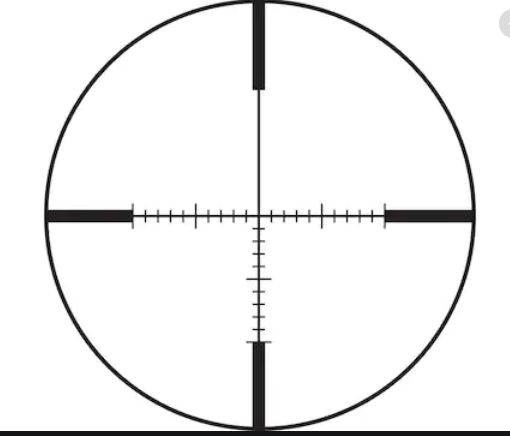Whether you’re new to shooting or you’ve hit the range a few times, some of the terminology can be confusing. When looking down the scope, though, understanding the difference between the first and second focal plane can seriously affect your shooting.
First Focal Plane
One of the biggest differences between the focal planes is the reticle. If your scope uses the first focal plane, the reticle adjusts in relation to the magnification. So, if you have a 2x/4x scope the reticle and hash marks will look the same at 2x and 4x. This saves you from some calculations, but it comes at a cost.
First, focal plane scopes are typically more expensive. Second, is the reticle. Because of the magnification auto-adjustment, the reticle can sometimes seem too small. Zoomed in all the way, though, the edges can be blurry or lost entirely.
Second Focal Plane
Second focal plane scopes are more popular and typically cheaper since they don’t have the internal components to adjust the reticle with the magnification. So unlike FFP, more calculations have to be made. 1 click, or MIL, left at the first magnification isn’t the same as 1 at the maximum magnification.
This means that the SFP takes more time to make adjustments, but the center of the reticle will remain on target throughout magnification. If you’re looking down your scope, you get the full picture at any magnification and just have to adjust for windage and ballistics like you normally would.
Which One is Better?
It depends on personal preference and what you’re using it for. If you’re good at calculations on the fly and like to see the full sight picture at all times, you might prefer a second focal plane scope. Likewise, if you want the scope to do those calculations for you and focus on accuracy and shooting you’d probably be better-suited with a first focal plane.
Also, your purpose when shooting should play a huge factor in the decision of which focal plane to use, too. Because of the wider view and the reticle staying exactly where you aim no matter how much you magnify, the second focal plane is preferred among hunters who don’t want their reticle obscured in any way.
First focal plane, being harder to find and better if you don’t always have time to adjust, is more commonly used by competition shooters and snipers. The ability to adjust one MIL at any magnification and have it be the same shift makes it easier for follow-up shots or hitting multiple targets in quick succession.
So, before looking at scopes you may want to determine what you’ll be using it for to narrow down which focal plane you need. If you just want a scope for the range, you might want to try both focal planes and decide which one you like better.
Author Bio:
Richard Douglas is a long-time shooter, outdoor enthusiast and technologist. He is the founder and editor of Scopes Field, and a columnist at The National Interest, Cheaper Than Dirt, Daily Caller and other publications.
Latest posts by Tactical Gun Review (see all)
- Bow hunting – an unforgettable experience – April 24, 2025
- Is MagnaCut the Next Breakthrough in Knife Steel? – December 17, 2024
- The Importance of Proper Gun Cleaning and Maintenance – October 30, 2024

Leave a Reply